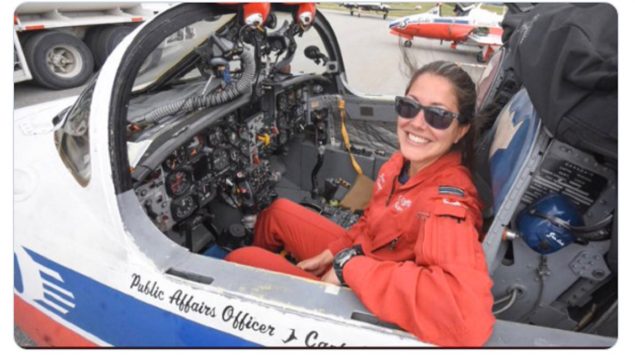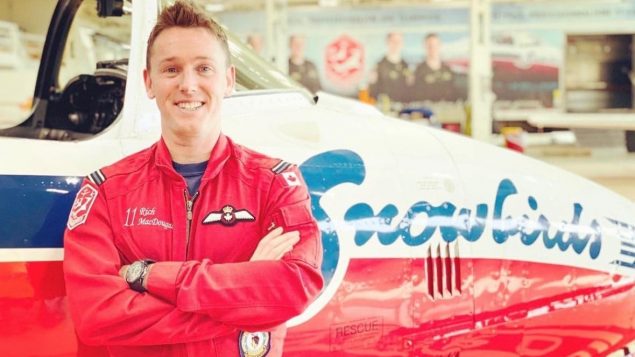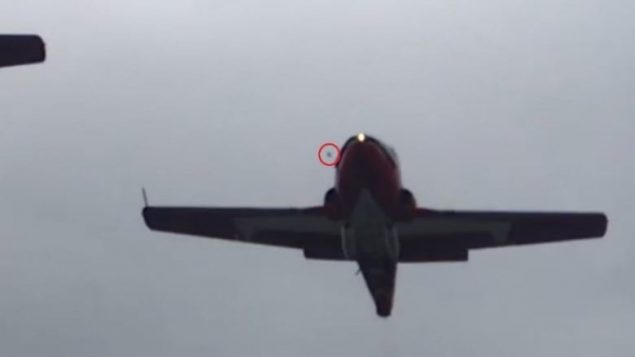The Royal Canadian Air Force (RCAF) says a small bird brought down one of its famed Snowbird air demonstration jets last year, killing a passenger and injuring the pilot.
The RCAF’s Directorate of Flight Safety released on Monday its findings into the fatal crash of the CT-114 Tutor aerobatics jet shortly after takeoff near Kamloops, British Columbia, on May 17.
“The investigation found that ingestion of a single, small bird into the engine of the aircraft ‘Snowbird 11’ following takeoff resulted in a compressor stall and a loss of thrust,” the military said in a statement.
“Upon loss of power, the pilot initiated a climb straight ahead and then a turn back towards the airport.”

The Tutor features side by side seating and individual ejection systems. Capt Jennifer Casey was killed in the accident on May 17, 2020 (Hayley Wickenheiser/Twitter)
During this manoeuver, the aircraft entered into an aerodynamic stall and the pilot, Capt. Richard MacDougall, gave the order to abandon the aircraft, it added.
MacDougall and his passenger, Capt. Jenn Casey, the Snowbirds’ public affairs officer, ejected from the aircraft at low altitude and in conditions that were outside safe ejection seat operation parameters, the statement said.
Neither had enough time for their parachutes to function as designed.
“Snowbird 11’s power loss could not have come at a worse time – low altitude, low airspeed, proximity to another aircraft, and in the vicinity of a built-up area,” said in a statement Col. John Alexander, the Air Force’s director of flight safety.
“This tragic accident reinforces the importance of continuous, situation-specific training to minimize reaction time in an emergency and the importance of a timely decision to eject.”

The report found that there wasn’t enough time for Capt. Richard MacDougall’s parachute to function. He has recovered from the crash. (Submitted by Royal Canadian Air Force)
The report recommends conducting additional training for CT-114 aircrew to better prepare them for an engine failure after take-off in a low-level environment. It also calls for clarification of the command to eject, as well as publishing a directive to clarify how aircrew should prioritize an ejection scenario near or over a populated area.
The report also calls for additional research into potential options to stabilize the ejection seat from any tendency to pitch, roll, or yaw.
“In emergency situations, pilots must make split-second decisions after quickly processing a lot of information, while at the same time dealing with high levels of stress, g-forces, and other challenging environmental factors in the cockpit,” said Brig.-Gen. Denis O’Reilly, Commander 2 Canadian Air Division.
“We are dedicated to learning from this accident and welcome the flight safety recommendations to minimize the chance of a repeat occurrence.”
The Snowbirds have been performing since 1971 and prior to the Kamloops crash had lost seven pilots and one passenger since 1972.







For reasons beyond our control, and for an undetermined period of time, our comment section is now closed. However, our social networks remain open to your contributions.